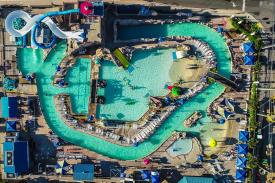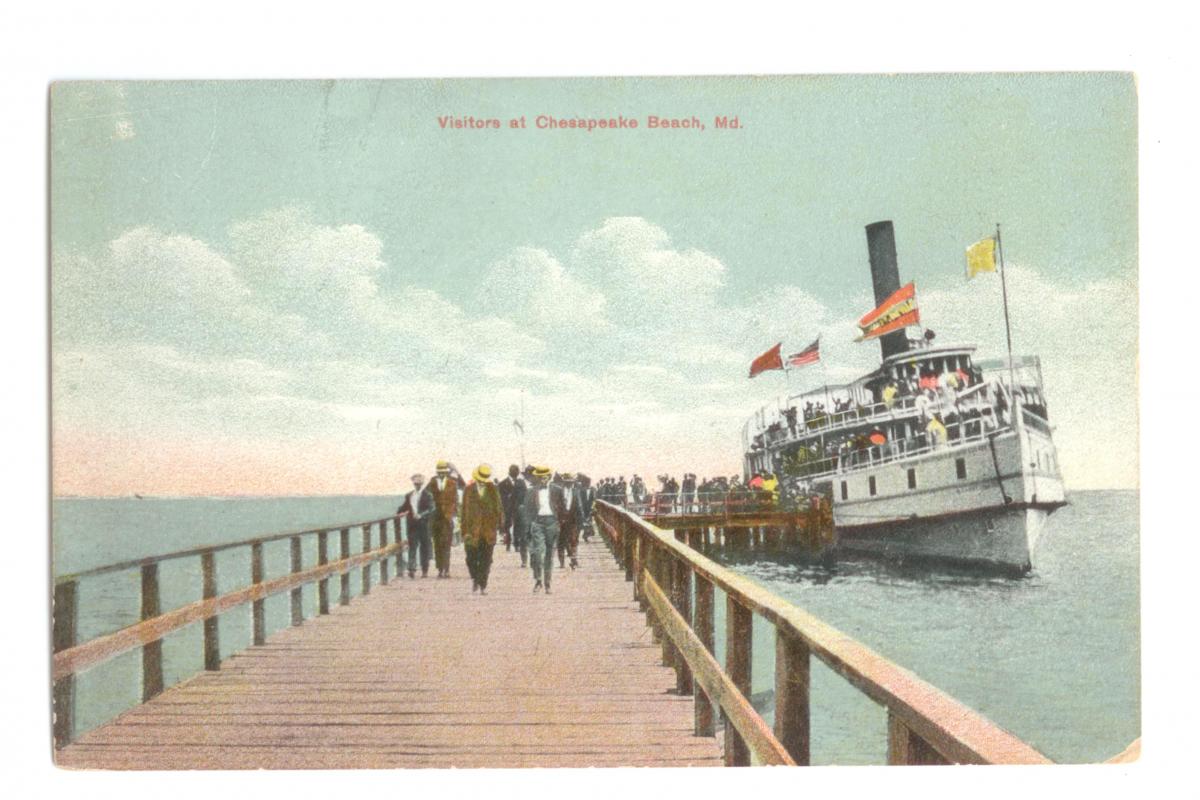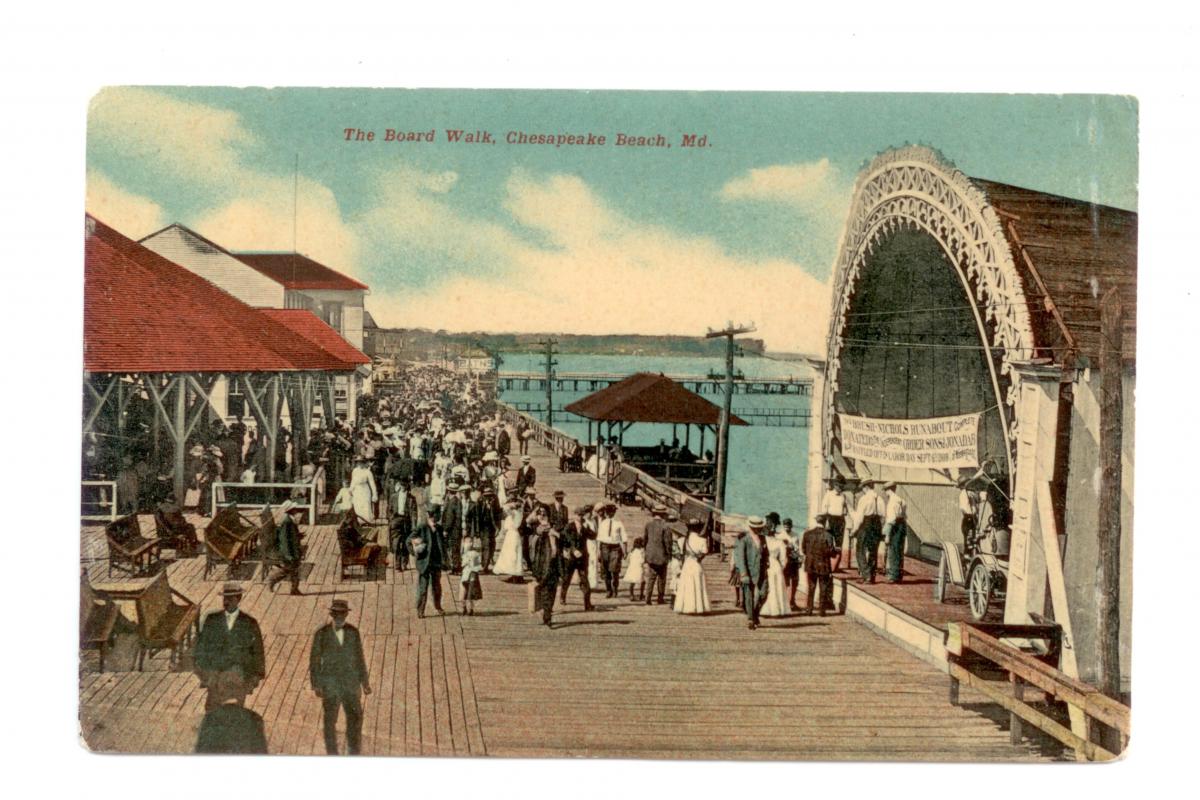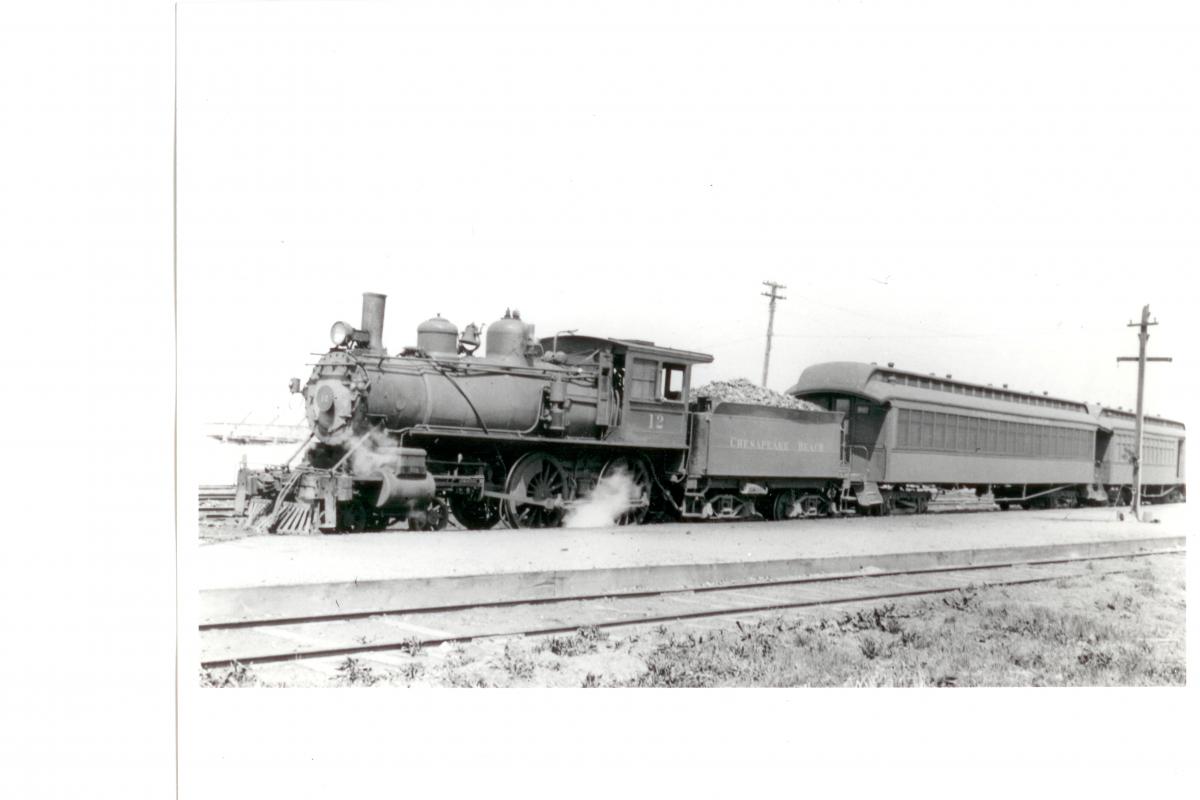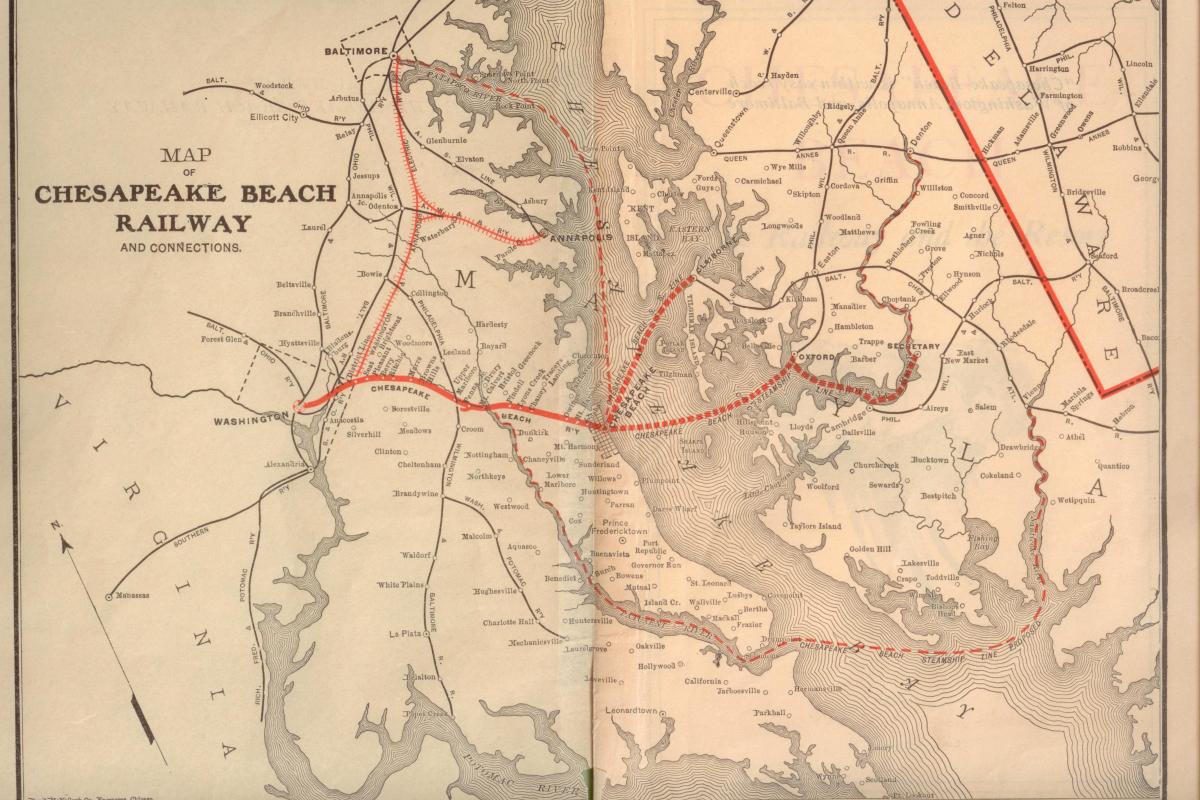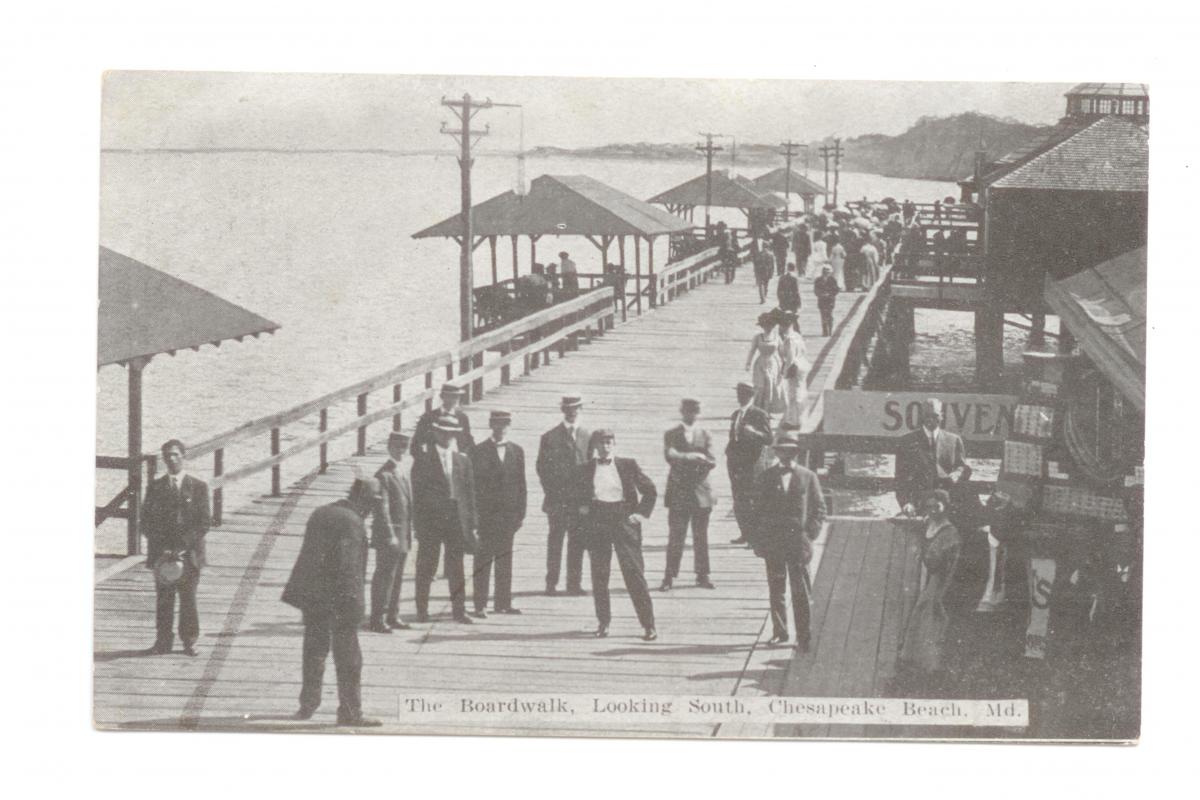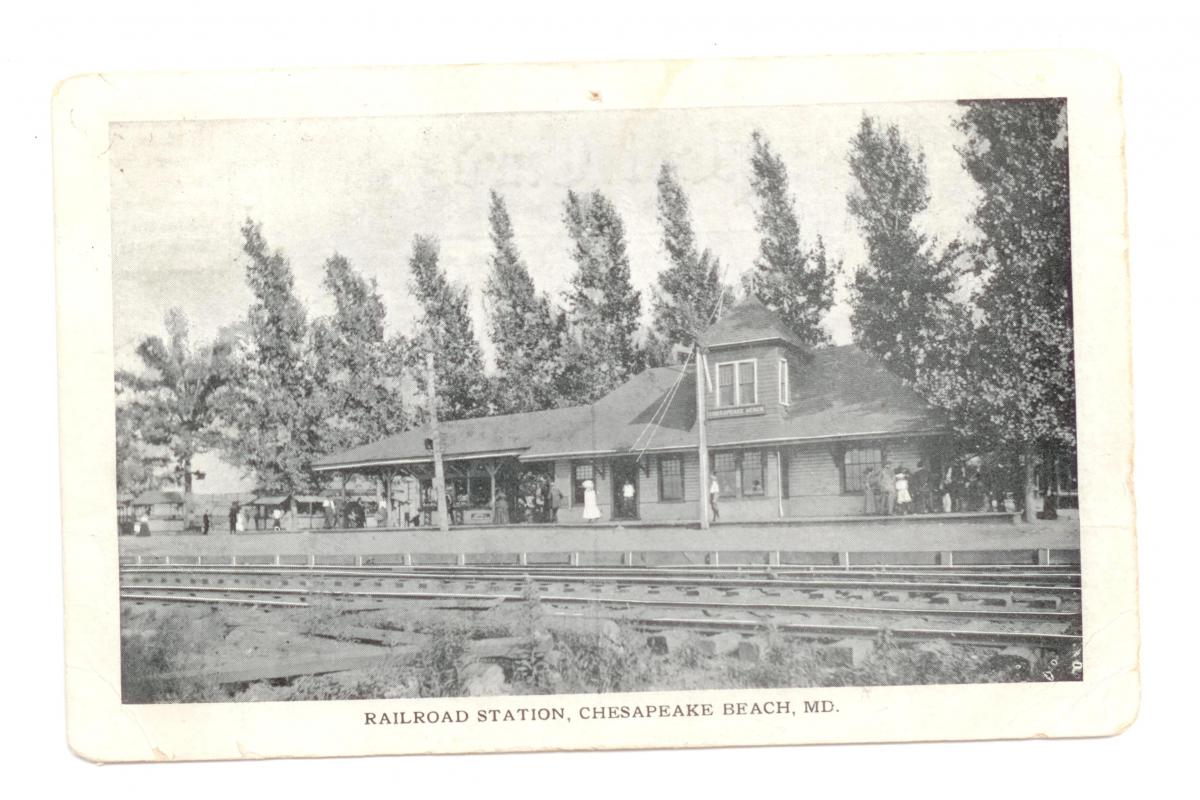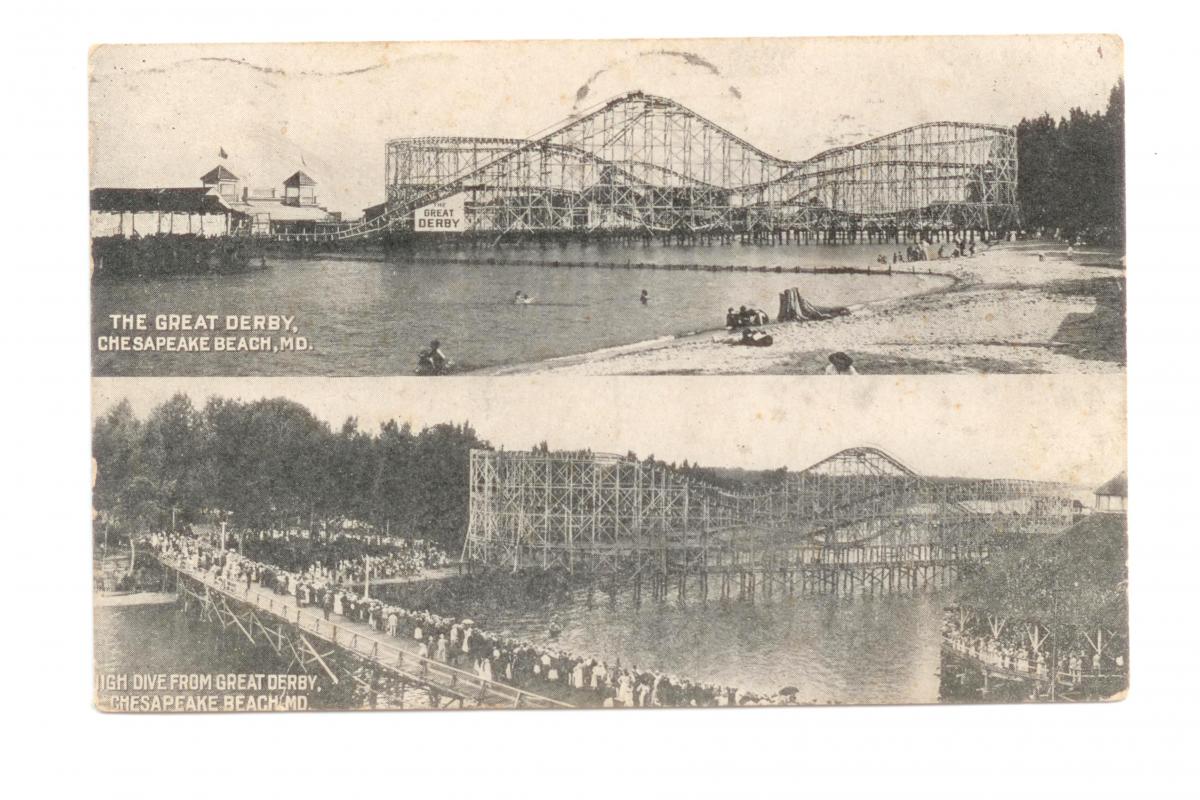Our History
In the late 1890's, Otto Mears envisioned a Chesapeake Bay waterfront resort with railroad service direct from Washington and Baltimore. Mears and a group of Denver business associates designed an elaborate resort town complete with hotels, bathhouses and beaches, casinos, a race track, and a 1600-foot boardwalk. The boardwalk extended over the water and featured a band shell, a carousel, a dance pavilion, a roller coaster, and a variety of entertainment booths. Passenger steamers arrived daily from Baltimore during the summer months and tied up at the end of a mile-long pier.
The first train arrived in Chesapeake Beach on June 9, 1900, filled with passengers and freight. For a few glorious years, the one-hour “Honeysuckle Route” carried holiday travelers through the rural Southern Maryland countryside to the fanciest resort on the Western Shore. The resort fulfilled Otto Mears' dream, but after 35 years financial hardship brought on by the Great Depression and the growing popularity of the automobile spelled the end of the railroad. On April 15, 1935 the last train left the station.
Today, thanks to the work of local preservationists, volunteers, and the support of the Calvert County Commissioners and the Town of Chesapeake Beach, the old railway station is back in business. Turned into a museum in 1979, the Chesapeake Beach Railway Museum preserves the history of the bayside resort through audio-visual presentations, artifacts, photographs, and exhibits portraying resort life during its heyday.
To learn more about the history of the Town of Chesapeake Beach visit the Chesapeake Beach Railway Museum. The Chesapeake Beach Railway Museum is listed on the National Register of Historic Places and is included in the Maryland Inventory of Historic Properties (CT-100). Erected in 1898 for the Washington and Chesapeake Railway Company, the station at Chesapeake Beach derives significance from its association with the transportation and related commercial history of Calvert County and as an excellent example of rural railroad architecture. Otto Mears' Washington and Chesapeake Railway Company ran from the fall of 1898 until the spring of 1935. The station was likely the work of a Mr. Winston, who was the contractor and builder for most of the houses and structures in the original town and park.

